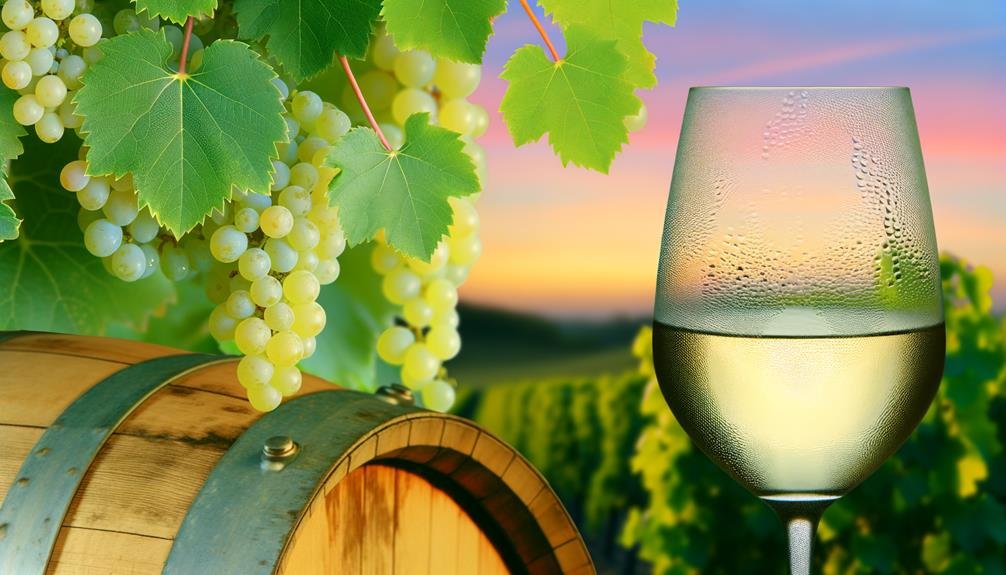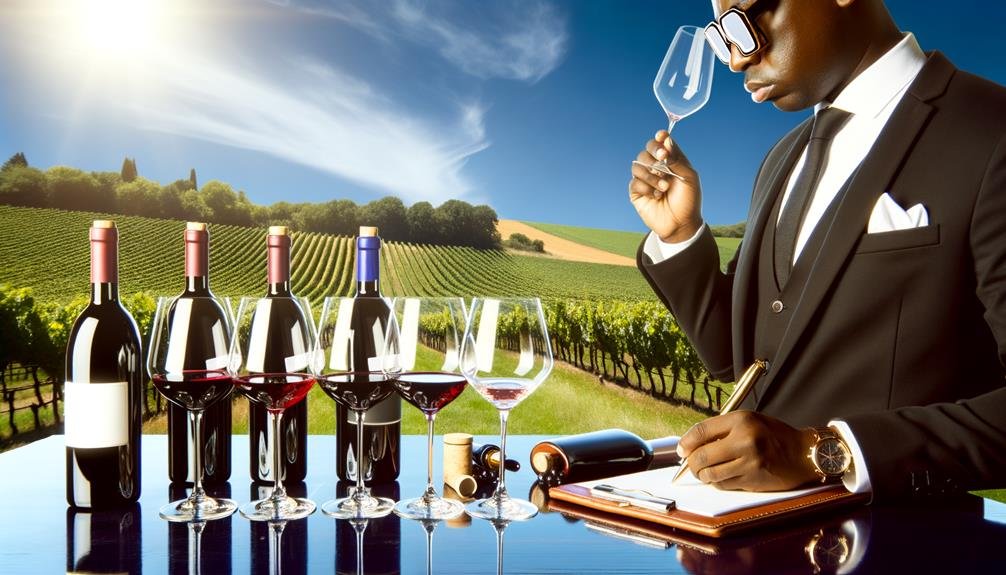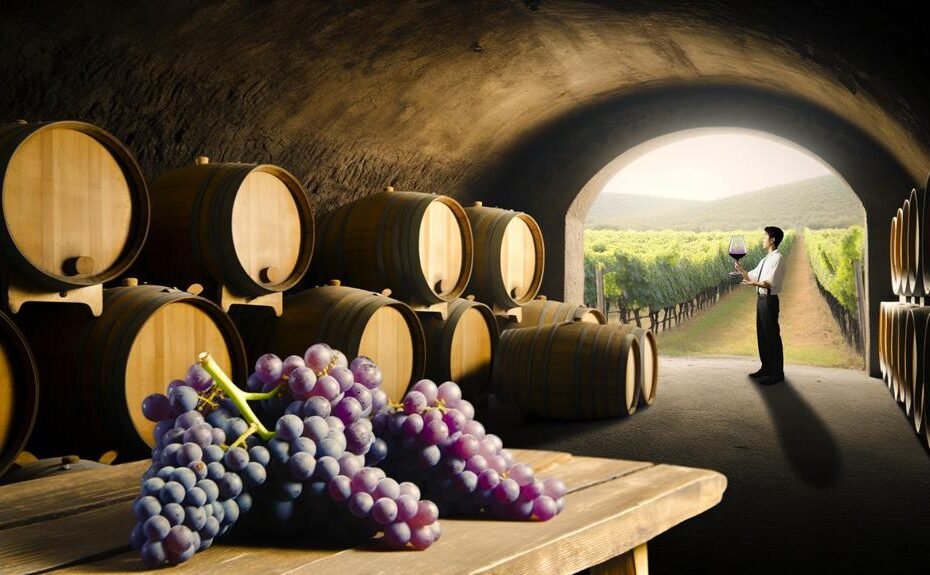Wine, a traditional beverage with a long history, is often surrounded by myths and misunderstandings. People sometimes assume that white wine is only for certain groups, or debate whether the size of the glass affects the taste.
It's essential to debunk these myths and understand important aspects like alcohol levels, aging, and scoring. By gaining insights into these areas, we can truly appreciate the depth and complexity of wine.
As we uncover the truth behind these misconceptions, we reveal a more nuanced and fascinating picture of this beloved drink, encouraging further exploration of its intricacies.
White Wine Misconceptions

Contrary to the common misconception associating white wine with femininity, it is actually a complex and refined beverage enjoyed by enthusiasts of all genders. White wine boasts a diverse range of flavors and intricacies that can rival those found in red wines. Varieties such as Gruner Veltliner from Austria, Assyrtiko from Greece, Vermentino from Italy, and the popular Sauvignon Blanc showcase the breadth of options available.
Interestingly, white wine shares similarities with beer, a traditionally masculine drink, underscoring its broad appeal across different preferences. For those who prefer less sweetness, there are plenty of savory white wine options to explore. The depth and adaptability of white wine make it a must-have for any wine lover, breaking free from outdated stereotypes and inviting a wider audience to appreciate its nuanced qualities.
Alcohol Levels in Wine
Understanding what influences alcohol levels in wine is key to fully appreciating its diverse nature. The sugar content in grapes when they are harvested is the primary factor that determines the potential alcohol level of the wine.
Grapes grown in warmer climates, where they receive more sunlight, tend to have higher sugar levels, resulting in wines with higher alcohol content. Winemaking techniques also play a crucial role in determining alcohol levels. Some winemakers let natural processes guide the alcohol content, while others may intervene to achieve specific levels.
Certain grape varietals, such as Zinfandel and Shiraz, naturally produce wines with higher alcohol content. Instead of viewing high alcohol wines negatively, embracing these differences allows for a more nuanced exploration of wine's flavors and profiles, offering both traditional and innovative experiences for wine enthusiasts.
Wine Scoring Realities

Wine scoring sparks debate due to its subjectivity and inconsistency. While a 90-point wine may appear better than an 89-pointer, scores vary greatly. Research shows that ratings change depending on the taster and circumstances, casting doubt on the reliability of numerical ratings.
It's wise for consumers not to fixate on minor score differences, as personal preferences heavily influence wine appreciation. Different rating systems can offer conflicting opinions on the same wine.
Wine Aging Facts
Nowadays, many wines are made to be enjoyed when they are still young, offering fresh and vibrant flavors for immediate enjoyment. These wines are carefully crafted with a good balance of acidity and smooth tannins, appealing to modern tastes.
It's essential to note that not all wines benefit from aging. While some red wines such as Cabernet Sauvignon and Bordeaux develop complexity over time due to their high tannin and acidity levels, lighter reds and white wines are best enjoyed when they are young and fresh.
The belief that all wines get better with age is no longer accurate; only specific types and grape varieties are suitable for aging. Thanks to advancements in winemaking technology, winemakers can now create wines that are ready to drink right away, satisfying the desires of consumers who seek instant gratification without compromising on quality or depth.
Wine Glass Myths

Many people believe that larger wine glasses always enhance the wine-drinking experience, but this is not entirely true. While larger glasses can help release aromas, the best glass size and shape depend on the type of wine being served.
It's important to consider that extremely large glasses can sometimes overwhelm the senses, making it challenging to appreciate the wine's subtleties. In addition, very large glasses may be impractical for everyday use.
Different wines benefit from specific glass shapes and sizes to optimize the drinking experience. Modern glass designs are innovative in that they aim to enhance particular wine characteristics, offering a more tailored experience for wine enthusiasts.
Conclusion
In the world of wine, there are many misconceptions that can cloud our understanding. Knowing the truth about white wine's versatility, the impact of alcohol levels, the reality of scoring systems, the facts about aging, and the myths surrounding glassware can greatly enhance your wine appreciation.
By debunking these myths, you can embark on a journey to a deeper and more fulfilling wine experience, akin to the timeless pursuit of knowledge and clarity.
